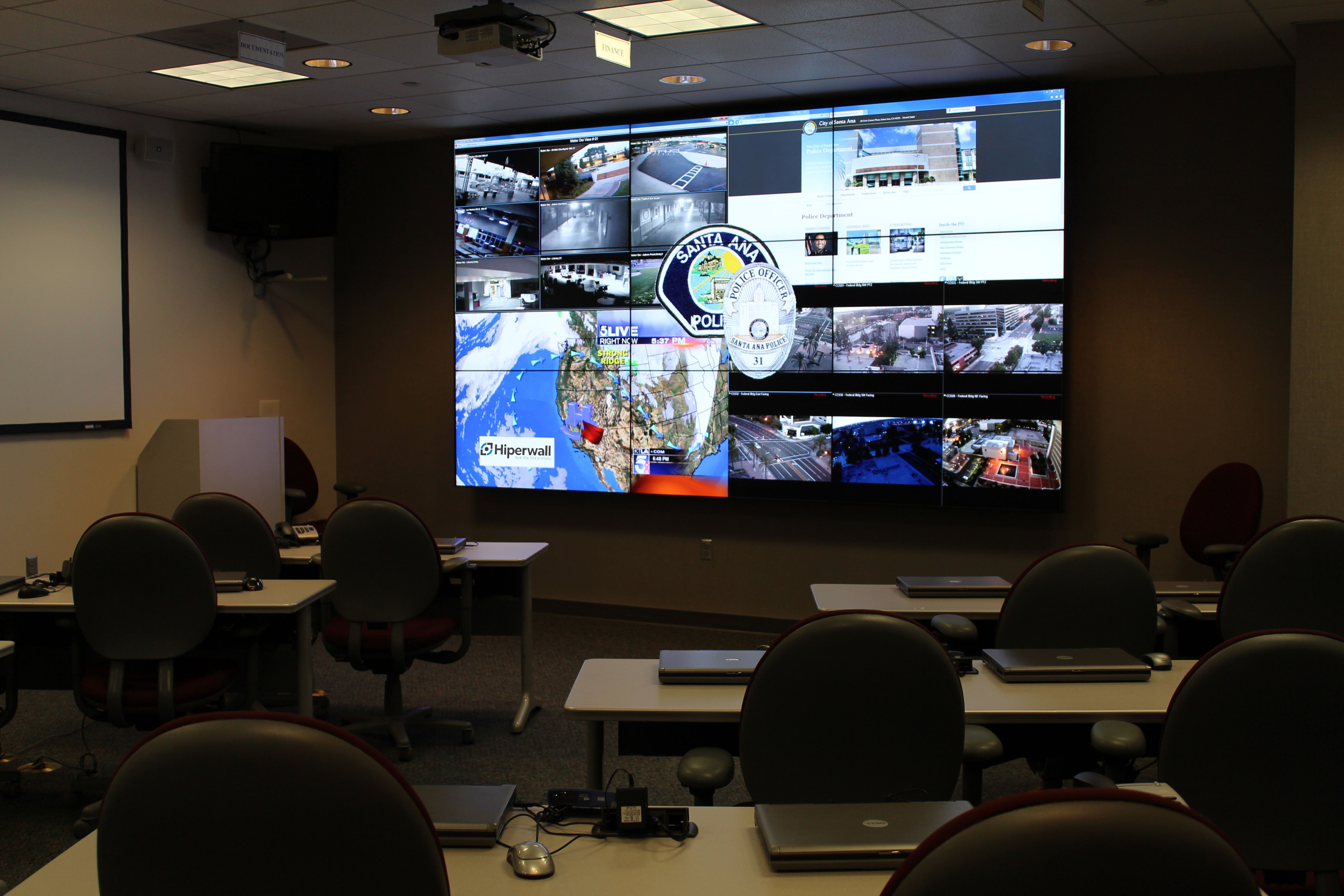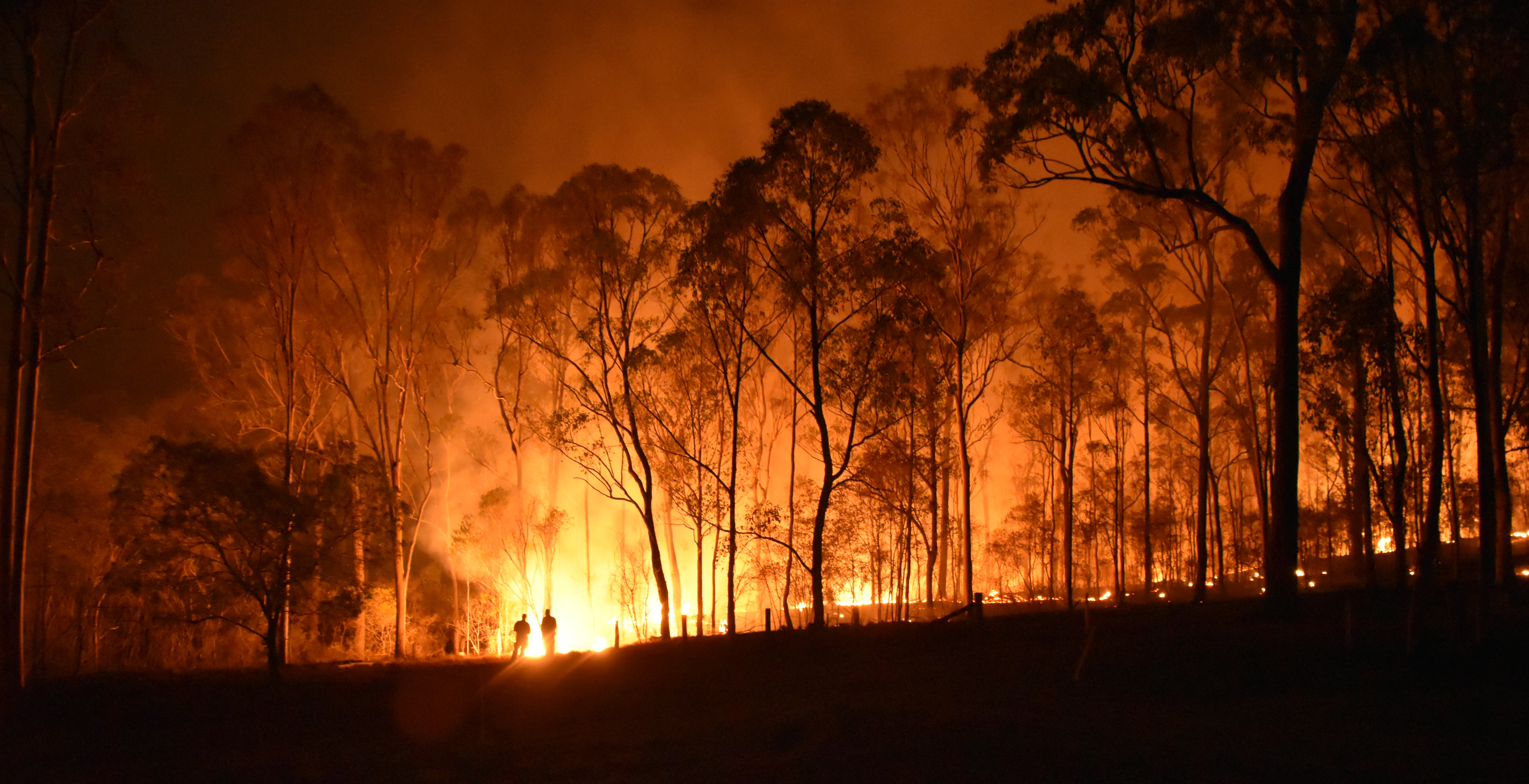
For new visitors that are not familiar with the Hiperwall system, the ten second description of Hiperwall is that Hiperwall is a powerful software system where you can easily display and control information, data, and videos on a video wall comprised of multiple displays. In this blog post we are going to discuss dispatch call centers at police departments around the world, and how Hiperwall can help your organization optimize decision-making and the flow of information in these centers.
Any police officer or police administrator that has spent an appreciable amount of time in and around a dispatch center will tell you that these rooms are usually relatively small and jam-packed with technology and activity. Computers are everywhere throughout the room, multiplied many times over by monitors coming out of each computer. Every dispatcher is glued into their display with a headset to communicate with officers and staff in the field, while juggling multiple software platforms on their desktop and usually 6-8 different monitors. In short, police dispatchers monitor and respond to a tremendous amount of information, all while serving as the positive first point of contact for individuals as they dial 911. At Hiperwall, we believe that success in the field begins with quality information sharing in the dispatch center. We want to share with you the advice and expertise we have learned over the years after working with dozens of law enforcement organizations around the world, including the NYPD.
For all of our law enforcement clients as an initial design concept we recommend setting up a centrally visible 2x2 video wall in the dispatch center. The reasoning behind this is simple: during hot calls there are often multiple reporting parties calling in the situation that is unfolding, and dispatch can quickly become inundated with multiple callers to address. Their primary goal in receiving these initial calls is to see if the caller can offer any new intelligence that can aid the in-field response. But how can dispatchers working the phones and their supervisor know what the initial intelligence is without putting callers on hold to talk to each other? For our clients, we have configured solutions where the contents of their desktop are shared to a central video wall. This allows each dispatcher to quickly look up and see the calls that are coming in, and guides their questions as they interact with each reporting party calling in developments.
The second critical design element for these dispatch centers is to create central operation of these video walls by the dispatcher supervisor present for each shift. Meaning that this supervisor can arrange content from his or her own computer, as well as the content from the dispatchers, on the LED video wall in order to share information with the whole team. We like to call this the “orchestrator” configuration; the dispatch supervisor tells the dispatchers what to display on their desktops and send to the video wall, so that the supervisor can absorb all of this information at the same time. With the dispatcher’s own computer they can be seated at their desk or even walking around with a tablet, and move content around on the video wall as well as make the content larger or smaller as needed.
If this ease of operation and information sharing sounds incredible, that’s because it is. Dispatch centers for police departments are high-stress and under-appreciated environments. Having a video wall system in place to share information so that your team can focus on providing pristine customer service to the reporting parties dialing 911 to report emergencies should be priority #1. With a quick consultation from our team, we can walk you through some of the stress tests to see just how effective your dispatch center can become. Reach out today!





